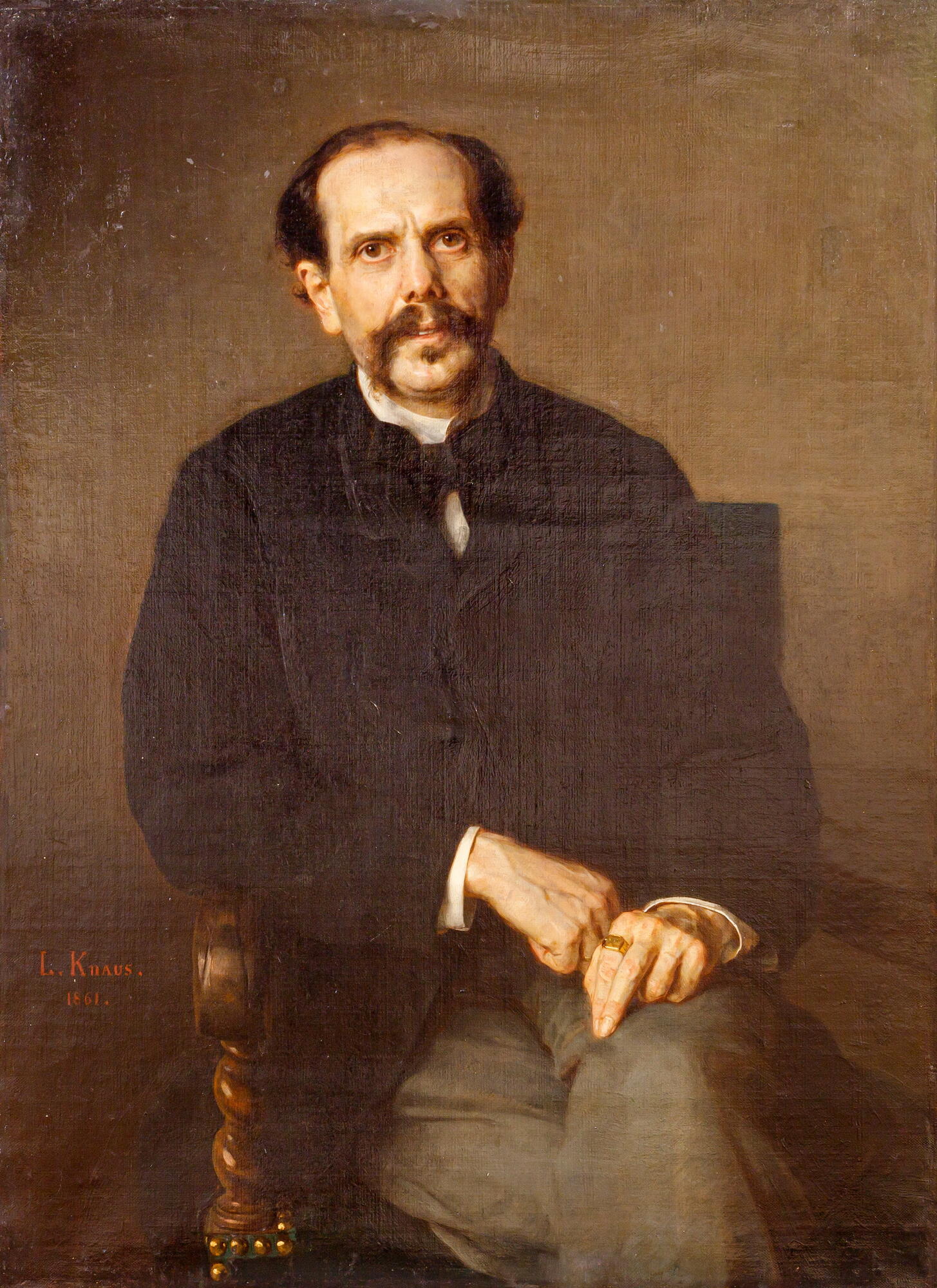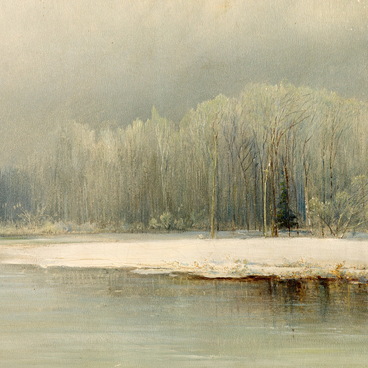“Portrait of a Man” by Ludwig Knaus is a typical example of the 18th-century German portrait painting. The artist emphasized the man’s face and hands by using the effect of light and managed to render his personality and disposition. He also put a lot of effort into detailing the sitter’s lively and soulful eyes which reflect his remarkable intelligence.
The Russian art historian Andrey Somov praised the art of Ludwig Knaus, “In his works, Knaus demonstrates excellent powers of observation, the ability to capture the personality and inner emotions of people of any age and fortune and to create true-to-life scenes filled with good-natured humor, pure joy, or profound feelings. His paintings stand out with their excellent drawing quality, impeccable colors, and exquisite manner.”
The German painter Ludwig Knaus was born into a family of an ophthalmologist in the city of Wiesbaden. Ludwig started showing a talent for drawing at the age of five, and in school, his skills were spotted by a teacher who sent him to study under the court painter Otto Reinhold Jacobi. At the age of 16, Knaus entered the Düsseldorf Academy of Arts where he found his calling in portraying ordinary people in genre painting.
Together with the Achenbach brothers, Knaus founded the Malkasten association. In German, its name literally means “a paintbox”. Later, this art society was transformed into the General German Art Cooperative. Ludwig Knaus earned his living by painting portraits on commission and often traveled across rural areas to acquire new experiences and find new characters for his paintings. Knaus greatly enjoyed exploring national costumes, architecture, and regional traditions. He also visited Belgium, the Netherlands, England, Italy, and France. As Knaus himself confessed, it was far away from home that he realized that “the multi-faceted and cozy German genre” was his main passion.
The National Gallery in Berlin commissioned Knaus to create the portraits of scientists and historians. At the International Exposition in Paris, the artist was awarded the Great Gold Medal and the Order of the Legion of Honor for his paintings “His Highness on a Journey”, “Tyrolean Peasant with a Beer Mug and Pipe”, and “Shoemaker’s Boys Playing Cards”. Ludwig Knaus moved to Berlin where he became the head of an academic art workshop and worked until his death at the age of 81.
The Russian art historian Andrey Somov praised the art of Ludwig Knaus, “In his works, Knaus demonstrates excellent powers of observation, the ability to capture the personality and inner emotions of people of any age and fortune and to create true-to-life scenes filled with good-natured humor, pure joy, or profound feelings. His paintings stand out with their excellent drawing quality, impeccable colors, and exquisite manner.”
The German painter Ludwig Knaus was born into a family of an ophthalmologist in the city of Wiesbaden. Ludwig started showing a talent for drawing at the age of five, and in school, his skills were spotted by a teacher who sent him to study under the court painter Otto Reinhold Jacobi. At the age of 16, Knaus entered the Düsseldorf Academy of Arts where he found his calling in portraying ordinary people in genre painting.
Together with the Achenbach brothers, Knaus founded the Malkasten association. In German, its name literally means “a paintbox”. Later, this art society was transformed into the General German Art Cooperative. Ludwig Knaus earned his living by painting portraits on commission and often traveled across rural areas to acquire new experiences and find new characters for his paintings. Knaus greatly enjoyed exploring national costumes, architecture, and regional traditions. He also visited Belgium, the Netherlands, England, Italy, and France. As Knaus himself confessed, it was far away from home that he realized that “the multi-faceted and cozy German genre” was his main passion.
The National Gallery in Berlin commissioned Knaus to create the portraits of scientists and historians. At the International Exposition in Paris, the artist was awarded the Great Gold Medal and the Order of the Legion of Honor for his paintings “His Highness on a Journey”, “Tyrolean Peasant with a Beer Mug and Pipe”, and “Shoemaker’s Boys Playing Cards”. Ludwig Knaus moved to Berlin where he became the head of an academic art workshop and worked until his death at the age of 81.





